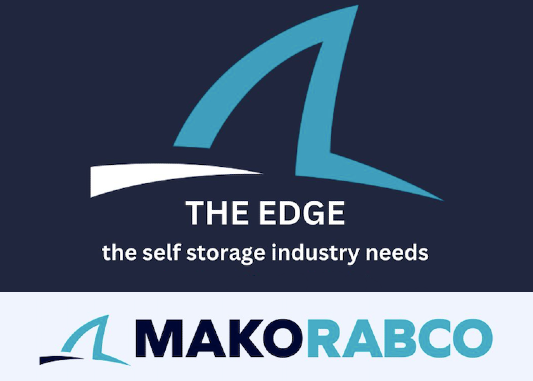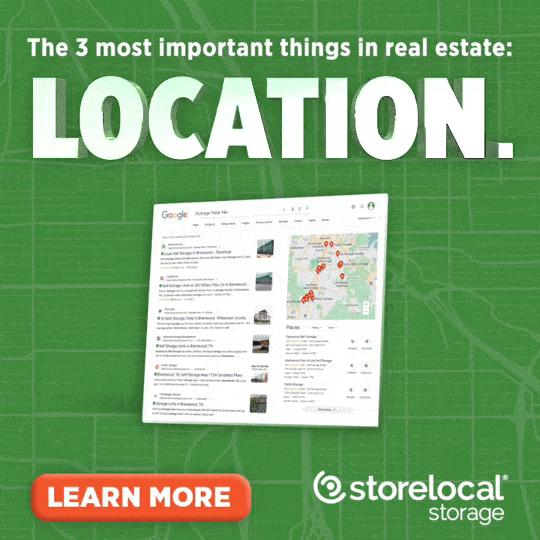Who's Who in Self-storage: Ryan Lorenzini, Director of the Claremont Companies
Put yourself in your customers’ shoes. Take the same journey that your customers must navigate to rent a unit at your self-storage facility. Then, be honest with yourself as you answer these important questions:
- Was it a fast, easy, and convenient experience?
- Approximately how long did it take to secure a unit and move in?
- Could you complete the move-in without assistance? If not, was the customer service you received satisfactory?
- Would you be comfortable storing your valuables at the property?
If you encountered any difficulties or frustrations throughout the rental process, it’s probable that customers, some of whom may be new to self-storage, were/are not completely satisfied with their experience at your facility. In truth, considering that competitors likely exist within the market area, any negative experience could prompt them to rent at another facility—one that provides a better customer experience.
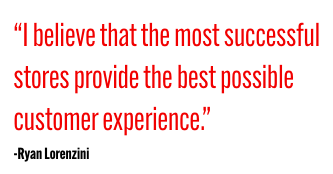
There are several alarming statistics that back up this notion. According to PwC, a professional services network, nearly one-third of customers (32 percent) will walk away from a brand they love after just one bad experience; 92 percent would ditch a brand after two or three negative experiences.
Per Salesforce, 80 percent of consumers believe the customer experience carries as much weight as the company’s product or service. And 54 percent of U.S. customers that PwC surveyed said that most companies need to improve their customer experience. If you’re wondering what matters to those customers, speed, convenience, helpful employees, and friendly service were the most important aspects of the customer experience for nearly 80 percent of PwC’s respondents.
Thankfully, there are benefits to providing an exceptional customer experience. For instance, 65 percent of U.S. customers who responded to PwC’s survey find a positive experience with a brand to be more influential than advertising, and 43 percent would pay more for greater convenience.
Self-Storage CX
“I believe that the most successful stores provide the best possible customer experience,” says Lorenzini. “The question is: What steps can an operator take to do this?”
In short, he states that operators can enhance their customer experience by focusing on “intelligent facility design,” utilizing “advanced technology features,” and strengthening branding, but all these items require purposeful deliberation.
“When making design decisions, of course we are considering costs,” he says, “but we are always cognizant of how the design will affect the overall customer experience.”
Claremont’s newest self-storage facility, Storelocal Hercules, a 98,298-net-rentable-square-foot, 794-unit property in Hercules, Calif., is a prime example of his laser focus on the customer experience in the design stage of development. Because the lot was approximately 3.5 acres, he knew from the get-go that a multistory building would be incorporated into the project to make it pencil, even though drive-up units are still favored by many customers for their ease of access. Both single-story and multistory buildings were included in the plan, but Lorenzini was determined to make the three-story building as convenient as the drive-up units.
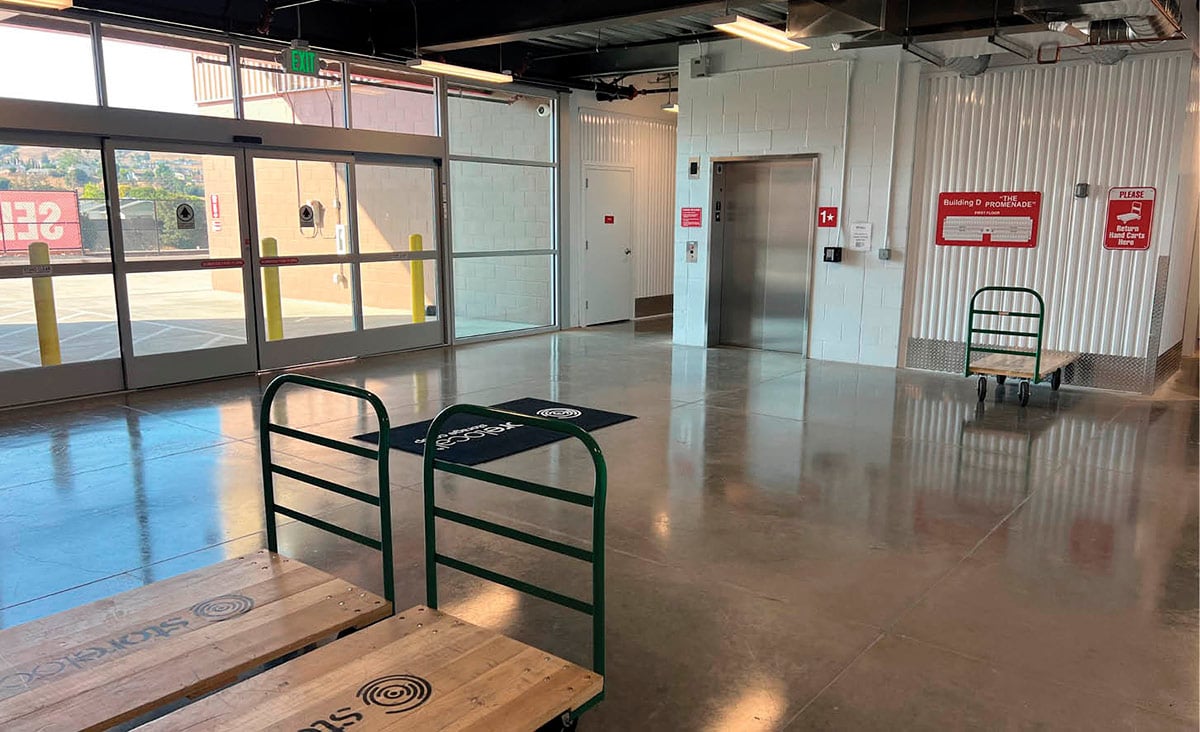
Storelocal Hercules' loading area
“We wanted to ensure that our customers would have no trouble accessing upper-floor units,” he says. “We designed the building with a large, covered loading zone that can fit two trucks side by side. Customers access the building through automatic sliding glass doors, which open to a huge elevator lobby with two elevators and several over-sized hand carts. I can tell you from experience that our customers truly appreciate the ease of access; it has made it easy for us to fill the upper-floor units and to achieve higher rents on the upper floors.”
To maximize move-in/move-out efficiency, the loading area and unit mix were strategically mapped out. The elevators are located in the center of the multistory building’s loading area, and having one elevator on each side of the lobby minimizes the distance any customer must travel to reach their unit. “Of course, some units are going to be closer than others, and we can price these units higher, based on distance from elevator,” he says. “There is a unit mix strategy whereby the upper floors tend to be smaller units (predominantly in the range of 5-by-5 up to 10-by-20).”
With most of the market’s storage supply being older product, Lorenzini recognized that a high-tech storage facility would standout from the competition and attract contemporary customers. “As self-storage design has evolved and improved, the consumer’s perception of self-storage has also improved,” he says. “But along with this, customers’ expectations have also increased, especially in the age of Amazon one-click shopping. Self-storage is essentially a retail business, and consumers expect nothing less than what they have come to expect from other retailers. Our customers want an experience that is fast and simple and that can be transacted on their smartphone.”
Lorenzini understood that having mobile-enabled access control and contactless rentals would meet customers’ expectations while improving ROI. “With every project, you learn something,” he says. “What we’ve learned is that the technological aspect is huge, especially in recent years.”
He wanted Storelocal Hercules to be the “most technologically advanced facility in the market,” but first he needed to calculate the costs to determine whether his vision was financially feasible for this facility. “Ultimately, it was not a problem,” Lorenzini says, adding that they are able to charge premium prices for its high-tech features, which include a smart lock on every door, an advanced security system, and a mobile-friendly property management software.
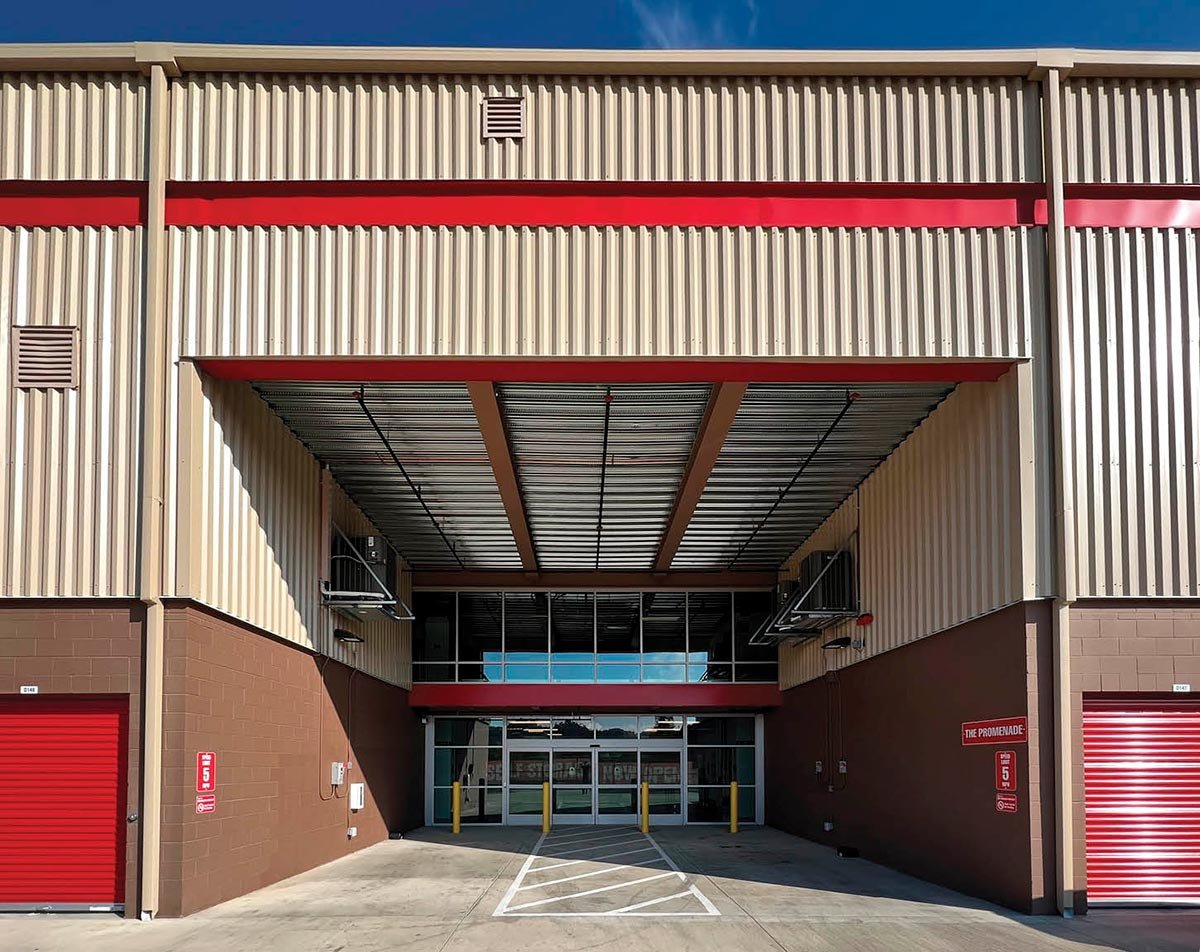
Storelocal Hercules' covered loading zone
Speaking of smartphones, Storelocal Hercules customers can access the front gate, the elevators, their units, and even the bathrooms with their mobile keys (AKA smartphones). “This truly enhances the customer experience, as there are no more forgotten gate codes and no more lost keys,” Lorenzini says, noting that they use Janus International’s Nokē Smart Entry system, which provides managers with a record of all users who’ve opened access points at any time. “Everything is in an app. The Nokē system has additional benefits such as allowing customers to share a digital key as needed with friends and family. This provides added security as it allows the manager to know who is accessing the facility at any given time. The system also includes a heat and motion sensor in every unit, so that the manager will know if somebody is in a unit after-hours, or if there may be a potential problem. This provides added security and peace of mind for our customers, again, enhancing the customer experience.”
He goes on to say, “The real beauty of smart locks, when integrated with powerful property management software, is that it allows for a completely automated move-in process for customers. Customers are able to rent a unit on their smartphone and gain access to their unit, even after office hours. This level of automation allows us to save money on operational costs. It also allows us to convert more customers.”
With 58 percent of web traffic being conducted on a mobile device, according to Statista, and that percentage expected to increase, it only makes sense to give customers the ability to complete rentals anytime, anywhere, from their smartphone.
“At Storelocal Hercules, approximately 10 percent of our move-ins have been unassisted,” adds Lorenzini. “These are customers that we likely would have lost otherwise.”
More Content
Popular Posts
The self storage industry is in a precarious...
Joe Shoen, CEO of U-Haul, has had enough.
Like its name implies, Surprise, Ariz., a...
Joe Shoen has had enough.
In a record-breaking deal finalized May 12,...
Senate Bill 709 (SB709) has many in the...
Donald Trump has just reclaimed the White...
The question of “abandonment” of stored...
Self-storage operators wear a lot of hats....
In 1992, Clinton strategist James Carville...
Recent Posts
When Neville Kennard left for a work trip to...
Self-storage software is no longer...
The self-storage industry continues to...
Fires in California. Tornadoes in Kansas....
From policy pivots in Ottawa to tariff...
Self-storage operators have struggled to...
Their signature red coats may draw attention...
Nailing down Josh and Melissa Huff for an...



















